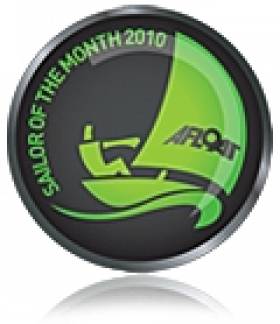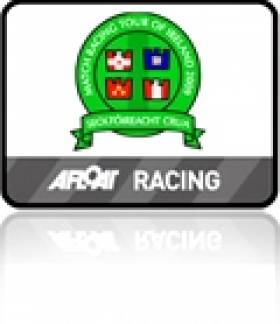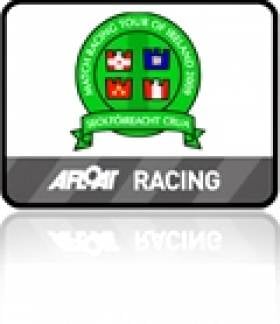Displaying items by tag: John Sheehy
Rejig Means No South Coast Match Racing Fixtures
There will be no match racing on the south coast this year following a rejig of the fixtures calendar.
After two years of expansion for match racing in terms of events the theme for 2011 is consolidation.
Changes to the ISA SailFleet schedule for the boats mean that we have had to go through a rejigging of the match racing calendar.
The major impact is that Royal Cork YC are to take the boats latter than originally hoped meaning that they will be unable to host a leg of the Tour.
With Kinsale not taking part in the SailFleet scheme this year that means no match racing on the south coast for the first time in a couple of years.
With no tie up with the Dun Laoghaire Festival of Cultures available this year a date of July 23rd and 24th has been settled on for the Ireland vs The World International.
The highlight of last year this event will once again pit Irelands 6 best match racers against 6 teams from the rest of the world. Once again National and Tour champion John Sheehy will captain the Irish team.
The Leinster Match Racing Open, to be hosted by the Royal Irish Yacht Club, has been moved to July 16th and 17th to allow it to act as qualification for the Irish team for the following weekend and to give Laura Dillion and the Gladiators (Sam Hunt, Paddy Blackley, Peter Bayly, Richard Murphy) competitive practice immediately before heading over to Poland to represent the country at the ISAF Nations Cup.
Howth Yacht Club's, Dublin Match Racing Open stays with a date of September 3rd and 4th before we head for Lough Derg and the Womens (October 15th and 16th) and Open National Championships (November 5th And 6th).
All of the above means that here will be no Munster Match Racing Open this year and work continues to find a host for the IUSA Student Match Racing Nationals with Galway a potential for early April. There has been considerable work on the cost of entry for events over the winter and the majority of events will have a basic entry of €330 this year. All events will be run at ISAF grade 3.
Revised calendar
July 16-17th – Leinster Match Racing Open, Royal Irish Yacht Club
July 23-24th – Ireland vs The World International, Royal St George Yacht Club
September 3rd and 4th – Dublin Match Racing Open, Howth Yacht Club
October 15th and 16th - Womens Match Racing Championships, Lough Derg Yacht Club
November 5th and 6th – National Match Racing Championships, Lough Derg Yacht Club
John Sheehy is October's Sailor of the Month
John Sheehy of Dun Laoghaire is the latest Afloat.ie/Irish Independent "Sailor of the Month" after his convincing recovery to retain his title as National Match Racing Champion in Kinsale on October 24th.
Recovery and retention became the theme of a hotly-fought series, as Sheehy had seemed to be off form on the opening day, far from overnight leader, in the doldrums way back in fourth. Things were still rocky on the second day as they battled on all fronts to stay in contention after taking a beating from Ben Duncan of Howth, who seemed on track to be the new champion.
But Sheehy and his crew sailed off on their own for a brief onboard motivation session. He had a crew of all the talents in Darragh O'Connor, Paddy Kirwan and Marty O'Leary and they returned to the fray fired up on all cylinders to go into the final series with eight wins, while Duncan had nine.
However, by this stage there was no stopping the John Sheehy onslaught. He clinched two more excellent starts and retained the lead despite ferocious pressure in both matches from Ben Duncan, who was clear second overall, while Sam Hunt was third, narrowly ahead of Prof O'Connell.
Sheehy Retains Match Race Title
Dun Laoghiare's John Sheehy retained his National Match Racing Championship title in Kinsale yesterday. The top three teams were: Jodapama Racing (John Sheehy) 2: Mad Match Racing (Ben Duncan) and 3rd: Gladiators (Sam Hunt). Vidcasts with the winners below:
Jodapama Racing have retained their Irish match racing title but had to do it the hard way. Lieing in 4th place over night the pressure was on to make the final and was made worse when they lost the openning race of the second day to Ban Duncan and MadMatch Racing.
After that openning loss John Sheehy, Darragh O'Connor, Paddy Kirwin and Marty O'Leary sailed away from the start area to regroup and came back firing, finishing on 8 wins. Mean while MadMatch kept on racking up points, their final tally topping the table at the end of the round robbin with 9 wins. Prof O'Connell (North Sails Ireland) and Sam Hunt (Gladiators) lead going into day 2 and despite mixed fortunes on day 2 held on to finish on 7 wins a piece to contest the 3rd/4th place play off.
In the 2-0 final Jodapama held pressure off the start in both races to take an early initial lead which they defended to the line despite being put under pressure all the way by MadMatch. 3rd place went to the Gladiators in a nip and tuck 2-1 play-off.
The win also secures Jodapama the Tour title for the second year finishing on 48 points. MadMatch Racing do enough to take 2nd on 29 point with Team Lazarus holding on to 3rd on 26. Gladiators and North Sails Ireland tie on 18 points, with the win in the final race of the play-off giving the Gladiators 4th place on the Tour standings.
Match Racing Day One Video: Prof on Top in Kinsale
Prof O'Connell topped the leader board at the end of the first round round robin stage of the Irish Match Racing Championships in Kinsale. (VIDEO BELOW) Sam Hunt and the Royal St George Gladiators are next and in an unexpected turn of events the defending champion, John Sheehy from Dun Laoghaire, has yet to shine.
John has dominated match racing in Ireland for the last couple of years and is the defending National and Irish Match Racing Tour champion.
For the first couple of flights it looked to be business as usual but then he ran up against Ben Duncan and Mad Match Racing. A first loss lead to second and then a third leaving the event wide open.
A second round robin started late today and will compete tomorrow before a best of 3 race finals. Any one of 5 teams still in with a shot of the title.
As an extra feature of the event the Irish Match Racing team have prepared the following vidcasts from Kinsale:
Local helmsman George Kingston describes his match
Umpires describe events on the water
Andrew Deakin (left) and Brian Carlin describe events on the water
Vidcast by Brian Carlin
Match Racing Tour Title Up for Grabs in Kinsale
With Team Lazarus already having used their allocation of 7 sailors for the year and Andrew Fowler prioritizing preparation and qualification for the World Team Racing Championships, to be held in Shull next year, the door is open for John Sheehy and the Royal St George Yacht Club team to sneak through and take the Match Racing Tour title for a second year. A 5th place would leave the teams tied and with the last showdown between the two going to Lazarus the St George team -- rebadged Jodapama Racing for the nationals – need a 4th or better for Marty O'Leary to make it three in a row (Marty also crewed for Nicholas O'Leary in his 2008 championship win).
Shull team racing connections extend beyond the Lazarus absence.Darragh O'Connor is back on the main sheet with Jodapama, Billy Clarke takes to the bow for Casesy Elmes Racing and the boss man him self David Harty lines out for North Sails Ireland. Both Darragh and Billy where on the University of Limerick team that won and finished top Irish team at the IUSA team racing championships in 2009 and 2010. David should be an able stand in for John Downeys as the tours most vociferous questioner of umpiring decisions.
With the championships in Kinsale it's only right that there is a heavy KYC connection for many of the teams. Another graduate from the college ranks, UCD this time, Aiden McLaverty skippers Team ASM-Marine. Exile Same Hunt benefits from the contentious switch of Richie Murphy from Mad Match Racing. Together with Paddy Blaney and Peter Bayly to two make up a Gladiators team that looks extremely strong on paper. Last but not least George Kingston, John Curtan, Ben Scallan and Simon Rattigan take on the mantle of local heros.
5 point on the Tour and just 20 on ISAF ranking separate the final 2 teams. For North Sails Ireland Prof (who's brother Aiden makes up the final element of the Casey Elmes team) and Harty are joined by Barry and Teddy Byrne. Mad Match Racing field an all Howth Yacht Club line-up of Ben Duncan, Ric Morris, Joe Turner and Emmet Ryan.
The first round robin kicks off at 10am on Saturday under the able guidance of Alan Crosbie and chief umpire Mike O'Connor. With fresh weather forecast racing in the outer harbor should be hectic to say the least.
Racing during the day can be followed via the live feed on the matchracing.ie web site with coverage brought to you by Andy Deakin and Cube Images Brian Carlin.
Irish Match Racers Jump Up Rankings
John Sheehy remains Ireland's top-ranked match racer, jumping twelve slots in the international rankings to 73rd in the world. Closing the gap considerably, clubmate Andrew Fowler's win in the most recent Investec Dublin Match Racing Open takes him 55 places higher to 164th, with North Sails helm Maurice O'Connell moving from 285th in the world to number 190, a jump of 95 ranking places.
The Irish rankings can be seen in full here.



































































